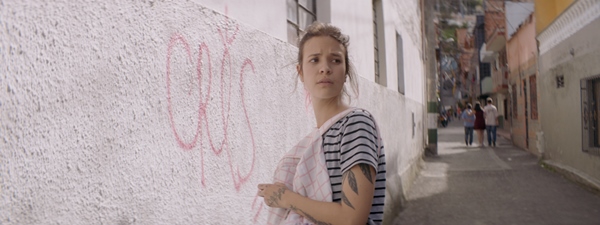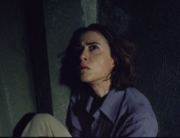
Mostly focused on male characters, a rich canon of Latin American movies have centered on street gangs and young delinquents, from Luis Buñuel’s 1950 classic Los Olvidados (The Young and the Damned) from Mexico, to the Venezuelan box-office success Sicario (Joseph Novoa, 1994), and the internationally acclaimed Brazilian film City of God (Fernando Meirelles, 2002). So, the first thing that attracts our attention in the Colombian film Days of the Whale is its fresh point of view.
Set in Medellín—the second largest city in the country—the feature film debut by Colombian filmmaker Catalina Arroyave has a female character at the heart of its story, which is a revolutionary act considering the canon previously mentioned.
Cristina (Laura Tobón), a young college student, participates in a collective of street artists, making graffiti art in the same barrio where a gang of teenagers operates. Her mother, a journalist, has escaped the country because of the death threats for her politically and socially charged articles. Yet Cristina keeps returning to the slum that is apparently connected to her mother’s work (though it’s not entirely clear how), but she doesn’t belong here: she is a middle-class young woman currently living with her father and his younger girlfriend.
Cristina has a close friendship with Simon (David Escallón), one of the graffiti artists from the barrio, and they inevitably become a couple. He knows many of the guys who are part of the criminal band. Some of them were boyhood friends. He has resisted the temptation of joining them though; his passion and frustrations are expressed through art.
Cristina and Simon participate in an artist collective that serves as a shelter for many from the dangerous street, but it’s not immune to harassment: the organization must pay the gang a monthly “vaccine” to be left alone. Because of flyers produced by the collective have exposed these payments, the gangsters respond to the collective with an ultimatum, graffiti that could be translated as “snitches get stitches.” While others are afraid, Cristina and Simon are willing to strike back. They decide to cover the heinous graffiti with a new one, a giant and psychedelic whale, Cristina’s favorite animal.
Her escapades in the barrio are a problem for Cristina’s worried father and a constant subject of discussion for his girlfriend (she and Cristina don’t get along well). If her mother knew, she wouldn’t approve, considering she insists on buying Cristina a ticket to come live with her in Barcelona. If the film had followed conventions, it would have been about Simon and the outlaws while Cristina would have been a supportive and passive character. As it is, the movie brings a necessary subversion that may not be apparent immediately. However, the movie doesn’t neglect Simon—and not only because of his relationship with Cristina. It also portrays his bond with his grandmother and his clash with the criminals who were once his friends.
Without diminishing its power as a threat, violence is never explicit here. In a suspenseful scene, Cristina escapes from a threat through the labyrinthine streets of the slum (and for those who have lived or visited these neighborhoods, they will know that the jagged layout doesn’t favor those who try to hide or run away). Later, puddles of blood are enough as a wake-up call of impending danger.
The most rebellious aspect of this movie lies in the defense of socially minded art as a vehicle for expression that makes corrupt forces feel uneasy, even when they don’t understand exactly why (the extraordinary graffiti of the whale upsets more for its presence than meaning). Days of the Whale wants to exercise a similar purpose as the art executed by its protagonists, and in that sense, the movie is successful on its own terms.
















Leave A Comment